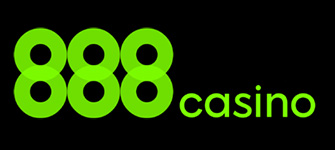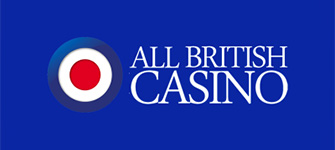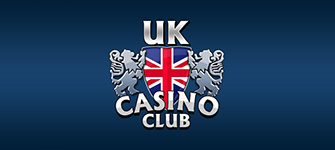Blackjack Strategy for Playing Hands
Many people equate playing blackjack to gambling and treat it no differently than chance-based games like roulette, baccarat, and craps. And indeed, chance plays some role here because it is impossible for one to predict with absolute certainty exactly what cards will be drawn next.
We, however, prefer to treat blackjack as a game of skill because by making meaningful decisions when playing out your hands, you can increase your win rate and ultimately save money in the long run. Unlike other gambling games, the house edge in blackjack is directly influenced by your playing decisions.
Optimal decisions can reduce the advantage the casino holds, and vice versa. Bad decisions and following what some players call “intuition” will inevitably cost you more money in the long term. There are mathematically correct decisions for all situations players could possibly encounter at the blackjack table.
- ✓ History
- ✓ Total-Dependent Basic Strategy
- ✓ Using Total-Dependent Strategy Charts
- ✓ Composition-Dependent Basic Strategy
- ✓ How to Pick the Right Strategy Chart
These decisions are succinctly summarized into wallet-sized charts and are collectively known as basic strategy. The charts prescribe the optimal plays for any player hand against any possible upcard the dealer shows. The reward for sticking to basic strategy is a house edge of .5% or less, which, in turn, helps players minimize their losses.
A Piece of Blackjack Strategy History
Basic strategy was formulated in the early 1950s by four army engineers from the United States, who went down in gambling history as the “Four Horsemen of the Apocalypse”. Wilbert Cantey, Roger Baldwin, Herbert Maisel, and James McDermott devised the strategy by using desk calculators, or “adding machines” as people referred to them at the time.
The strategy appeared for the first time in the Journal of the American Statistical Association (JASA) and was subsequently published in a separate book called Playing Blackjack to Win. The publication presented the strategy in the form of a chart. The correct playing decisions for drawing, standing, doubling down, and pair splitting were listed under separate sections.
After the publication, the Four Horsemen quietly went on with their lives and dedicated themselves to fields that had nothing to do with gambling. However, their strategy made huge waves in the blackjack community and quickly caught the attention of professional gamblers.
Perhaps more importantly, the engineers’ strategy was noticed by Edward Oakley Thorp, a Professor of Mathematics at the Massachusetts Institute of Technology (MIT), who went on to become known as the “father of card counting” later on.
Mr. Thorp decided to test the Four Horsemen’s blackjack strategy on the IBM 704 computers at the MIT and quickly determined the suggested moves were almost on the mark. There were very minor inaccuracies. Mr. Thorp went on to perfect basic strategy and then came up with the world’s first card counting strategy to further improve blackjack players’ odds.
Thorp was so committed to beating the game that he went as far as learning the Fortran imperative programming language to aid his theoretical research on blackjack probabilities. When finished, Mr. Thorp decided to give the strategy a test drive in an actual casino.
He took a short break from his teaching duties and visited several Las Vegas casinos along with famed American engineer, mathematician and cryptographer Claude Elwood Shannon. Needless to say, Professor Thorp’s efforts paid off. It turned out that both basic strategy and his counting system are indeed efficient when applied to blackjack.
Both the improved strategy and the first card counting system (which he called the Ten Count) were published in Mr. Thorp’s book Beat the Dealer. This is a very fitting title for a book that almost literally transformed blackjack into a beatable game overnight.
Beat the Dealer quickly climbed on top of the bestseller list of the New York Times. As a result, many gaming venues tweaked the rules at their blackjack games out of fear skilled players will bankrupt their tables.
And the rest, as the saying goes, is history. The bottom line is basic strategy is just as important to blackjack players as game theory optimal (GTO) is to many poker players. In fact, basic strategy is so essential in blackjack that even professional players use it in combination with other advanced techniques.
Total-Dependent Basic Strategy
Before we proceed with further explanations, we would like to emphasise that basic blackjack strategy leads to a reduction of the house edge but fails to abolish it completely. This stems from the fact the Four Horsemen had intended the strategy to be used against a neutral deck. They formulated it before advantage play became popular.
Further knowledge of the changing composition of the deck is needed to overcome the house edge, something that is achieved through card counting. The plays suggested by basic strategy are based solely on the knowledge of three cards – the two cards in the player’s hand and the dealer’s exposed card.
The strategy can be effectively applied to online blackjack variations that run on a Random Number Generator (RNG) where the cards are reshuffled after each round and you start off a neutral deck or shoe each time. With that cleared out, basic strategy helps blackjack players in three ways:
- Some basic strategy moves help players improve the winning odds of certain hands.
- Other basic strategy plays are intended to minimize players’ losses during disadvantageous situations.
- Lastly, certain basic strategy moves enable players to maximize earnings during advantageous situations.
Novice players often question the accuracy of basic strategy charts. While such doubts are partially understandable, they are completely unnecessary. These charts are created in one of two ways.
The first one is using probability theory, in which case, the optimal plays are determined based on complex mathematical computations. The second way is easier as it relies on computer simulations. The computer would simulate tens of thousands of blackjack rounds, playing out the hands with different strategies to determine which moves yield the best results.
Also worth noting is that the strategy will not yield said results right away. It works in the long run over the course of thousands and thousands of played hands. It goes without saying using basic strategy is an absolute must for blackjack fans who play consistently, either online or at landbased casinos.
Furthermore, the house edges of the blackjack games online software providers specify assume those who play abide by basic strategy and do not change the size of their wagers dramatically. The house edges of most blackjack variants range between .3% and 1% with perfect basic strategy. The casino advantage jumps to 2% to 5% for those who play intuitively without the strategy.
Another thing worth mentioning is that the bulk of the playing decisions is uniform across all variations of 21. However, there may be discrepancies between strategy charts due to rule variations. This calls for strategy adjustments in some situations. Further on in this article, we have included tips on how to pick a strategy chart for your chosen blackjack variant.
Using Total-Dependent Strategy Charts
Novice players are recommended to start by mastering total-dependent basic strategy. It is presented as a chart where all possible totals for the player’s hand are listed vertically. The upcards of the dealer are listed horizontally.
The intersections where the dealer’s upcard and the player’s hand total meet contain the optimal playing decision for the respective situation, be it hitting, standing, splitting pairs, doubling down, or surrendering. Insurance and Even Money should never be taken under basic strategy.
One question novice blackjack players ask about total-dependent strategy has to do with what happens once you hit a hand after the initial deal. For example, one is dealt a hard 12 against the dealer’s 2. They hit and draw another deuce for a total of 14.
What follows next? In this case, nothing follows because you should stand on a 14 against the dealer’s deuce. The bottom line is players must consult with the strategy chart each time they make a decision on their hands, regardless of the number of cards dealt to them.
The charts are typically colour-coded so that players can easily distinguish between the different moves. The second-best plays are also included in the chart to account for the cases where the optimal decisions are impossible due to rule variations. Here is the legend for a basic strategy chart:
- H stands for hit.
- S stands for stand.
- Ds stands for double down, if possible. If not, the player should stand.
- Dh means double down, if possible, if not, you should take a hit.
- P stands for split. When you examine the chart, you will notice the absence of two pairs – 10/10 and 5/5. Similarly to insurance, these are not listed at all because they should never be split under basic strategy. Players should automatically treat them as hard totals of 20 and 10.
- Ph means split on condition doubling after a split is possible. If not, the player should hit.
- Rh stands for surrendering if possible. Otherwise, the player should hit instead.
- Rp means the player should surrender if the casino allows. If not, they should split.
- Rs tells you to surrender if permitted or stand if surrendering is disallowed.
Composition-Dependent Basic Strategy
Players with experience who want to hone their blackjack skills are recommended to transition to the more advanced version, known as composition-dependent basic strategy. As you can probably guess by the name, here the correct plays are based on knowledge of the exposed card of the dealer and the exact cards that comprise the players’ hands.
This approach toward the game was originally introduced by blackjack expert and mathematician Peter Griffin, who presented it in his 1979 book The Theory of Blackjack. Later on, it was further expanded on by Fred Renzey and Donald “Don” Schlesinger, member of the Blackjack Hall of Fame. Have a look at these experts’ published books for further information on this approach, especially if you are serious about blackjack.
Composition-dependent strategy leads to a further reduction of the house edge as it is based on more in-depth information. The charts for this advanced strategy are bulkier so we shall limit ourselves only to some of the most important moves players can make use of. The approach is extremely useful to those who play blackjack variations that utilize fewer decks (one or two).
- Hard 12 versus 4 – Single-deck and double-deck players who follow total-dependent strategy would normally stand on hard 12 when the dealer’s exposed card is a 4. However, Mr. Griffin recommends in his book that you hit your 12 against the 4 whenever the hand consists of 10/2, K/2, Q/2, or J/2. The odds tip in favour of drawing more cards in this case. You should stand when the hand contains any other combinations that add up to a total of 12, such as 6/2/4, 7/3/2, 8/4, 7/5, and so on.
- Hard 16 versus a 10 – This is another tricky play regardless of what basic strategy one is using. Hard 16 against a 10 is the worst possible situation a blackjack player can find themselves in. Total-dependent basic strategy favours surrendering in this case, regardless of the number of cards the hard 16 is made up of. If surrender is not an option, the second-best play is to hit the 16 rather than stand.This does not apply to paired 8/8, which you should split. However, composition-dependent strategy favours hitting when the hard 16 is made up of 10/6, K/6, Q/6, J/6, and 9/7 but recommends standing with three-card totals like 7/4/5, 10/2/4, 9/2/5, and so on. The logic behind that play is that the deck has already been depleted of some of the low-value cards that can help you improve your total without busting.
- Hard 15 against a 10 – This is another bad situation for blackjack players since hard 15 is also a total with a high bust rate. Under total-dependent strategy, the player should surrender or hit if the surrendering is unavailable. Composition-dependent strategy goes further to suggest that hitting is a bit more favourable than forfeiting your hand but only on condition the hard 15 consists of 7/8.The player stands slightly lesser chances of busting because some of the possible bust cards (7 and 8) are no longer in play. Composition-dependent strategy favours surrendering over hitting for hard 15 that contains 6/9, 10/5, K/5, Q/5, and J/5.
How to Pick the Right Strategy Chart
We previously mentioned the different playing conditions you will encounter across blackjack tables call for strategy modifications in certain situations. When playing online, you can switch between variations with great ease and convenience.
All you have to do is take advantage of one of the free basic strategy engines available on the web. Adjust the rules so that they coincide with those of the blackjack variation you intend to play.
Within a split second, the strategy engine will make all the necessary adjustments for you. You can even print out your chart if you find it more convenient. Other than that, the following aspects bear consideration when choosing strategy cards for different blackjack tables:
- Deck number influences the optimal plays for some hands. Check whether the variant you intend to play uses one or more decks. Blackjack is commonly dealt out of a single deck, two, four, six, or eight decks. Most live dealer games usually play with eight decks. Five decks are a rarity in this game but are used in Big Five Blackjack by the software provider Microgaming.
- The standing rules for the dealer have a direct impact on some of the correct basic strategy moves. In blackjack, dealers are required to either stand on all totals of 17 (S17) or hit soft 17 (H17). The second rule adds to the house advantage and calls for strategy modifications.
- Inquire whether doubling is allowed following a split. The absence of this option also increases the house edge but more importantly, it impacts the plays for some of the possible hands. It is recommended to find a strategy chart that includes the alternative (the second-best) plays when doubling after a split is impossible. The same goes for resplitting and surrendering.
- Make sure you can comfortably read the strategy chart. This applies largely to the printed charts sold online or at the gift shops of many landbased casinos. The charts are sometimes so small that you will need a magnifier to distinguish the optimal plays for your hands.


 PlayOJO Casino
PlayOJO Casino 888casino
888casino All British Casino
All British Casino Casino Action
Casino Action UK Casino Club
UK Casino Club